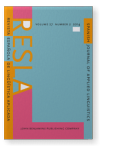Vol. 27:2 (2014) ► pp.297–322
Vol. 27:2 (2014) ► pp.297–322
Distintos enfoques al traducir y su efecto en el receptor
The objective of this study was to determine how the translation approach adopted in an elementary reading text affected its reception by a group of primary school children. Also studied was the impact that the translation approach used had on reading motivation. The three approaches were the following: (i) a domesticating approach that adapted cultural elements to the readership (Gonzalez Cascallana, 2006, p. 99); (ii) a foreignizing approach that preserved the elements of the source culture; (iii) a mixed approach with a combination of elements from both the foreign and domestic cultures. The sample population in the study was composed of 120 second-graders, who read different translated versions of the same story and subsequently answered questions about it to assess the understanding, recall, and motivation. The results obtained showed that the subjects had a greater understanding and motivation in the case of the domesticating translation, in which cultural elements were adapted.
Article language: Spanish
